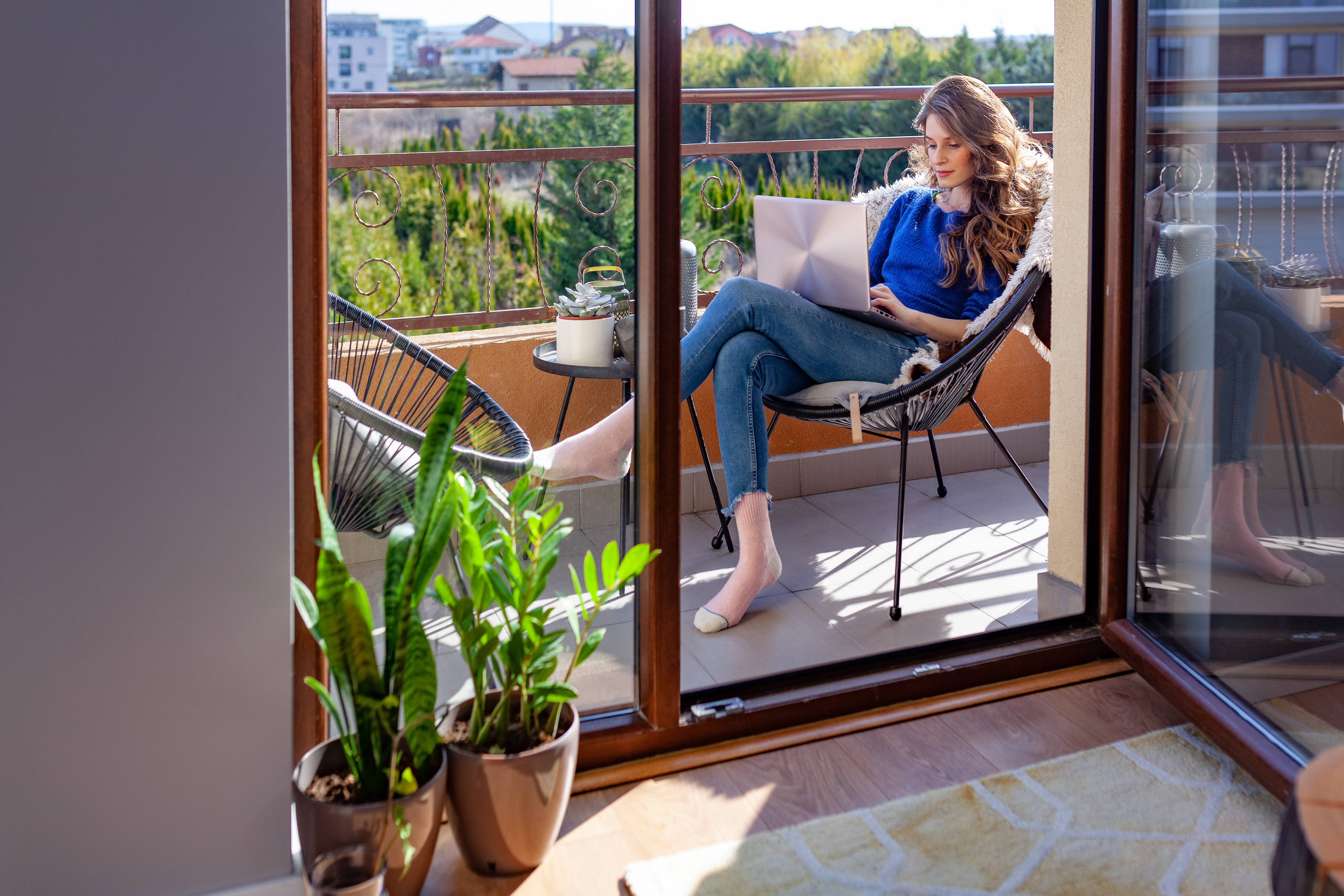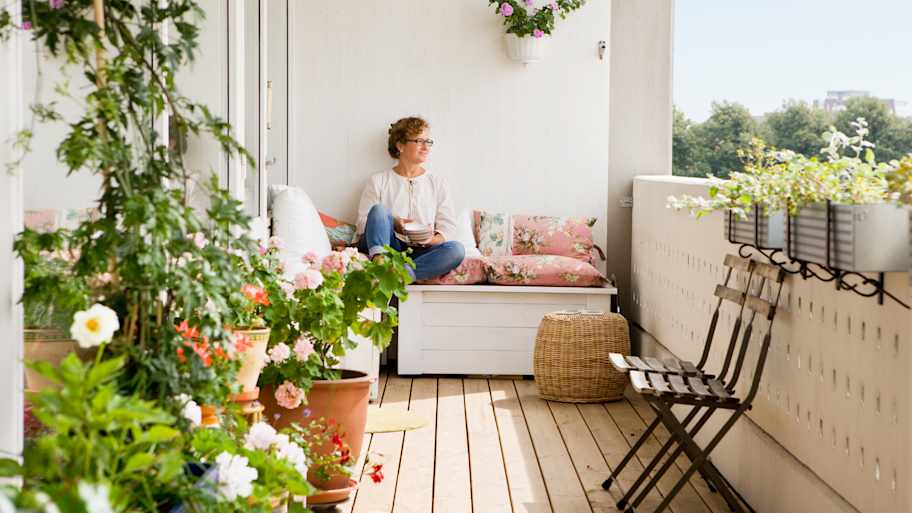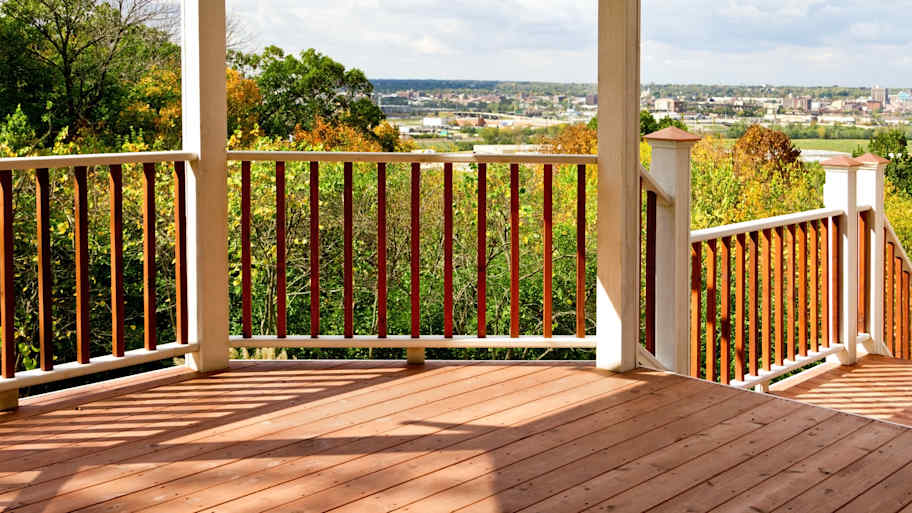
Trying to calculate your pool deck cost? Our guide walks you through both inground and above-ground pool deck cost factors, such as material, location, and labor rates.
Deck and porch service costs depend on your project and location. Check with a local pro for your specific job.
Cable railings are priced by linear foot, so the longer the railing, the higher the cost.
Materials are the next largest cost factor, and you can choose different materials for posts, top rails, and the cable itself.
This is not a beginner-friendly DIY project, so if you’re looking to save money on installation, choose a different material.
Alternatives to cable railings include wood, aluminum, glass, and composite.
If you're considering adding a new railing to your deck, patio, or staircase, you've probably thought about cable railing costs. This attractive railing system costs between $3,750 and $13,000 for an average 50-linear-foot rail. Costs can fluctuate depending on the additional materials you choose and if you have a larger deck that needs more railing. A cable railing system costs $75 to $260 per linear foot.
Cable railings are a sleek and modern choice for both indoor and outdoor spaces, providing safety without obstructing views. Take a look at the factors that influence cable railing costs so that you can make an informed decision when you’re ready to hire a pro for your project.
Not all decks, balconies, and walkways are the same, so let's explore the key factors contributing to the overall cost of updating your deck railings to cables.
The size of your cable railing system is one of the biggest factors affecting the cost, with most cable railing systems falling between $75 and $260 per linear foot. The larger the area you need to cover, the more materials you’ll need, meaning a more expensive project. This is especially true if you choose a deck railing idea featuring handrails on multiple sides of your deck or porch.
You can break down price differences in size by looking at the length and height of your materials.
| Deck Size (Square Feet) | Length (Linear Feet) | Average Cost |
|---|---|---|
| 100 | 20 | $1,500–$5,200 |
| 150 | 25 | $1,900–$6,500 |
| 300 | 35 | $2,600–$9,100 |
| 400 | 40 | $3,000–$10,400 |
| 500 | 45 | $3,400–$11,700 |
| 625 | 50 | $3,800–$13,000 |
| 750 | 55 | $4,100–$14,300 |
| 900 | 60 | $4,500–$15,600 |
Most cable railing is 36 or 40 inches tall, though commercial cable railing is 42 inches tall or higher. Taller fences typically cost $170 to $270 more than shorter fences.
The material and shape of the posts impact the total price. Squared stainless steel posts cost between $140 and $230, while rounded stainless steel posts range from $110 to $200 each.
Alternatively, aluminum posts are more affordable, ranging from $65 to $125 per post. Wooden, vinyl, and composite posts are the most affordable, but they can vary widely, with prices ranging from $20 to $120 each.
| Post Type | Cost per Post |
|---|---|
| Squared stainless steel | $140–$230 |
| Round stainless steel | $110–$200 |
| Aluminum | $65–$125 |
| Wood | $20–$120 |
| Vinyl or composite | $25–$35 |
If you opt for a top rail, it’s a similar story to the rail posts but with flipped pricing. Squared or rounded stainless steel handrails cost $20 per linear foot. Aluminum or wood handrails, on the other hand, cost between $30 and $60 per linear foot. Vinyl and composite handrails cost the least at $10 to $20 per linear foot.
| Top Rail Material | Average Cost (per Linear Foot) |
|---|---|
| Stainless steel | $20 |
| Aluminum or wood | $30–$60 |
| Vinyl or composite | $10–$20 |
When installing your own cable railing system, you have two types of cable materials to choose from: galvanized carbon steel and stainless steel wire. Which one you choose could make a huge difference in the cost, appearance, and durability of your railing.
| Material | Price per Linear Foot |
|---|---|
| Galvanized Carbon Steel | $0.35–$0.45 |
| Stainless Steel Wire | $0.50–$1.70 |
Galvanized carbon steel cables cost an average of $0.35 to $0.45 per linear foot. This type of material is more budget-friendly than its stainless steel counterpart, but galvanized carbon steel is more susceptible to corrosion. As a result, you may end up paying more to repair your railing, which makes any upfront savings less of a deal in the long run.
Stainless steel wire costs anywhere from $0.50 to $1.70 per linear foot, with stainless steel designed for coastal and harsh climates falling at the higher end of the price range. Though you’ll pay more for stainless steel cables, this material is rust-resistant, making it more durable and long-lasting. On top of this, your stainless steel cable railing will stay shiny and aesthetically appealing for years to come, as it won’t crack or fade over time.
There are two main types of stainless steel wire for cable railing, including:
Type 304: The most common type of stainless steel wire
Type 316: A good option for homes in coastal regions where salty air is more likely to corrode metal
Cable railings are relatively straightforward to budget for on straight runs. However, if your design includes multiple corners, the project will require more infill material, such as additional posts and cables. Each corner may increase the cost by 20% to 30%.
The labor cost for installing cable railings accounts for a large portion of the project’s cost. Labor costs depend on your location and the complexity of the project. On average, labor can cost an additional $20 to $50 per linear foot. Some contractors charge for the number of hours the project takes instead of charging by linear foot, in which case you should budget between $50 and $100 per hour.
| Average Labor Cost by Length | Average Labor Cost by Time |
|---|---|
| $20–$50 per linear foot | $50–$100 per hour |

While the initial installation cost is important, you also need to factor in the ongoing expenses of maintaining cable railings. Cable railings require regular cleaning to prevent corrosion and maintain their appearance.
If you have wooden posts and handrails, you need to budget for restaining, resealing, or repainting those parts of the deck to protect the wood from the elements. These maintenance costs can add up over time but are essential for the longevity of your railing system.
Hiring a local deck builder costs $20 to $50 per linear foot for labor, which might have you guessing whether you should DIY the job. While you can opt for a cable railing kit and install it yourself, having it professionally done is the best way to get long-lasting and correctly installed railings.
These are all of the reasons why it’s best to hire a decking pro to install your cable railings:
If the railings are for a second-story deck, stairs, or a home with children or older adults, professional installation is key to ensuring your family’s safety.
Your deck builder will obtain the necessary permits and comply with local building codes.
Pros use high-quality materials, so your railings will have a long lifespan.
The railing will have the correct tension, whereas a DIY job can have cables that are either too loose or too tight, posing safety hazards.
Improper installation of the posts, especially corner posts, can lead to a weakened railing with sagging cables that is unsafe to use.
Cable railing kits can come with low-quality materials that may not withstand harsh weather conditions.
Cable railings aren’t the only material in town. There are a few other options, each with its own pros and cons.
Wood railings: This type of railing typically costs $20 to $60 per linear foot, which is more budget-friendly than traditional cable. However, wood railings offer a shorter lifespan and require more maintenance.
Aluminum railings: This material is often found in posts but can sometimes be used to make the actual railings. The cost is around $50 to $200 per linear foot. Aluminum offers a decent balance between durability and cost.
Glass railings: Glass is a great choice for those with unique aesthetic preferences, but you’ll pay for the luxury. This type of railing costs $100 to $600 per linear foot.
Composite railings: These railings are known for offering a good value while remaining durable. They cost anywhere from $25 to $60 per linear foot.
Tell your deck builder where you’d like the cable railing and whether you’ll need them to remove existing railings.
Be ready to discuss which material you’d prefer for the posts, top rail, and cables.
Let your pro know whether you want vertical or horizontal cables—while the latter is more common, vertical cables offer a unique feel.
Find out whether your pro offers workmanship warranties and what they cover.
Ask if your pro offers maintenance for the railing after it’s installed, including cleaning and tension checks.
Home is the most important place on earth, which is why Angi has helped more than 150 million homeowners transform their houses into homes they adore. To help homeowners with their next project, Angi provides readers with the most accurate cost data and upholds strict editorial standards. We extensively research project costs to develop the pricing data you see, so you can make the best decisions for you and your home. We rely on reputable sources, including the U.S. Bureau of Labor Statistics, academic journals, market studies, and interviews with industry experts—all to ensure our prices reflect real-world projects.
Want to help us improve our cost data? Send us a recent project quote to [email protected]. Quotes and personal information will not be shared publicly.
From average costs to expert advice, get all the answers you need to get your job done.

Trying to calculate your pool deck cost? Our guide walks you through both inground and above-ground pool deck cost factors, such as material, location, and labor rates.
Deck replacement costs depend on materials, any structural damage you need to fix, and more. This guide explores how much it costs to replace or repair a deck.

Discover how much it costs to build a balcony, including average prices, cost factors, and tips to budget your project. Learn what impacts balcony construction costs.

Still deciding between a terrace or a balcony for your home? Learn the pros, cons, and key differences to pick the perfect fit for your space.

You can DIY a floating deck with the right layout, materials, and installation method. Here’s everything you need to know about how to build a floating deck.

Many homeowners wonder why their cedar deck is turning black. This article explains the most common causes and how to fix them.